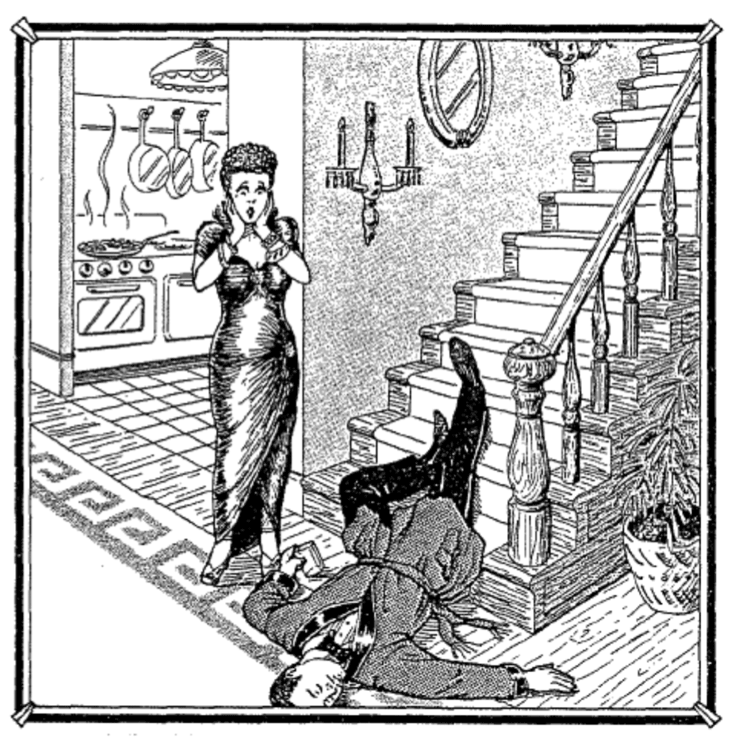n the exercise that follows, you will be using evidence from a crime scene drawing to make a carefully constructed written argument that explains how you determined the innocence or guilt of a suspect.
Your paragraph will adopt the claim/evidence/warrant system of organization.
Looking at an example of how write such a paragraph will be helpful.
EXAMPLE: A SLIP?
Setting the Scene:
| At five-feet-six and a hundred and ten pounds, Queenie Volupides was a sight to behold and to clasp. When she tore out of the house after a tiff with her husband, Arthur, she went to the country club where there was a party going on.
She left the club shortly before one in the morning and invited a few friends to follow her home and have one more drink. They got to the Volupides house about ten minutes after Queenie, who met them at the door and said, “Something terrible happened. Arthur slipped and fell on the stairs. He was coming down for another drink—he still had the glass in his hand—and I think he’s dead. Oh, my God—what shall I do? The autopsy conducted later concluded that Arthur had died from a wound on the head and confirmed that he’d been drunk. |
Here’s a picture from the death scene:

Using evidence from the picture and the above “setting the scene” text, how can the evidence be interpreted to demonstrate whether or not Queenie is being accurate in her statement.
You might start organizing your ideas with an EVIDENCE CHART. This chart organizes the evidence that could suggest Queenie is being dishonest in her statements
| Evidence | Warrant (how and why does the evidence support the claim) |
| Everything on the wall is still properly arranged. | If Arthur had fallen as Queenie described, he would have grabbed at knocked and so knocked askew the items on the wall. Instead, they are undisturbed. |
| There’s a glass in his hand still. | A person who tripped accidentally likely would have dropped the glass while trying to stop the fall. |
You might then blend together the claim, the two points evidence, and the two relevant warrants into a paragraph.
| (Claim) Forensic analysis suggests that Queenie’s claims are lies because the death scene shows so little evidence of the disturbances and chaos that one would expect as a consequence of a man accidentally falling down the stairs. (Evidence 1). For example, all of the decoration on the wall is still in place. (Warrant 1) If Arthur had tripped as Queenie described, he likely would have grabbed at or at least brushed against the wall decoration and so disturbed their careful arrangement on the wall. (Evidence 2) Next, there is still a glass in Arthur’s hand. (Warrant 2) Had Arthur tripped as Queenie claimed, he likely would have dropped the glass as he tried to rescue himself from his fall–so the glass in his hand suggests he did not, in fact, fall. All of this evidence points to the conclusion Arthur could not have died as Queenie described. |


